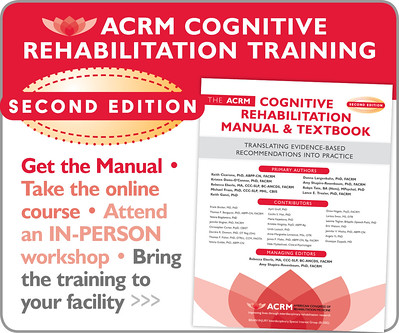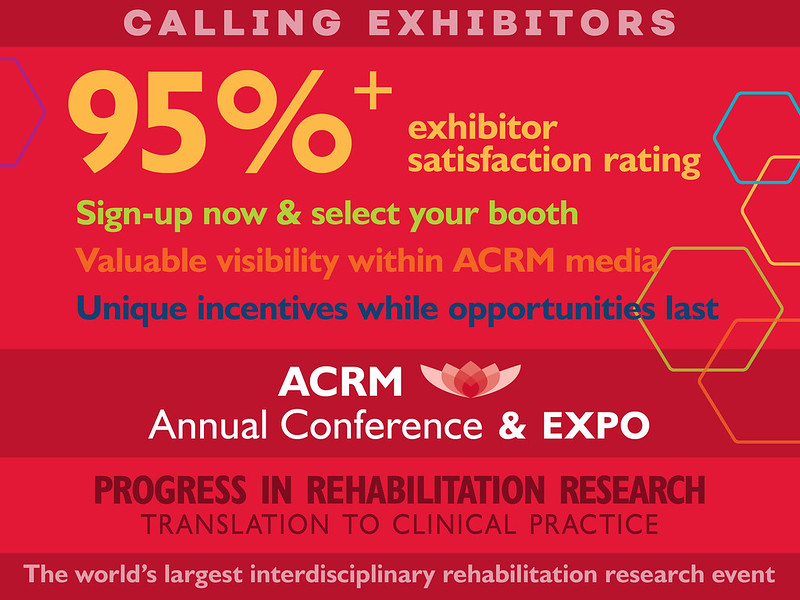Consumer Resources
PATIENT EDUCATION
- ACRM Information/ Education PagesThe ACRM Communications Committee has developed a new feature, Information/ Education Pages, which appears in the Organization News section of the ACRM scientific journal, Archives of Physical Medicine and Rehabilitation.These fact sheets are printed as tear-out pages. They are designed to provide consumer-friendly information on topics relevant to rehabilitation medicine, including basic background or overview, similar to a Wikipedia entry, or brief how-to suggestions. They are targeted toward people with disabilities, their caregivers, or clinicians; and are designed so that a practitioner can tear out and copy, or download the pages, to make them available to patients and caregivers.
- Health Access for Independent Living FactsheetsThe NIDILRR-funded Rehabilitation Research and Training Center on Community Living has published a series of twelve factsheets for the Health Access for Independent Living (HAIL) program. These resources can empower people with disabilities to manage their own healthcare and participate more fully in their communities. Factsheets address important consumer skills including: Goal Setting, Tracking Goals, Understanding Health Coverage, Managing Your Medications, Assistive Technology, Accessing Preventive Care, Organizing Your Health Records, and Working with Your Care Providers. Factsheets on secondary conditions are also available on Chronic Pain, Fatigue, and Depression. Read More >>
ARTICLES
- Brain Imaging: Understanding the Basics (PDF)
- Facts About the Vegetative & Minimally Conscious States after Severe Brain Injury (PDF)
- Rehabilitation of Attention after Brain Injury
- A Transition Guide to Postsecondary Education and Employment for Students and Youth with Disabilities – This guide for students, youth, and parents addresses transition planning, services, and requirements; education and employment options for students after leaving school; and supporting decisions made by students and youth with disabilities. This guide also includes real life examples, a sample flow chart of the transition process, and a glossary of key terms used in the transition process.
ADVOCACY
- CareCure Community
- Global Applied Disability Research & Information Network
- International Center for Disability Resources on the Internet
- John A. Hartford Foundation
- Neurosurgery://On-Call
- Rehabilitation Institute of Chicago LIFE Center
- TBICommunity.org
- Wheel Chair Junkie











